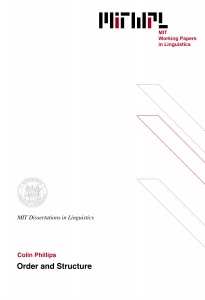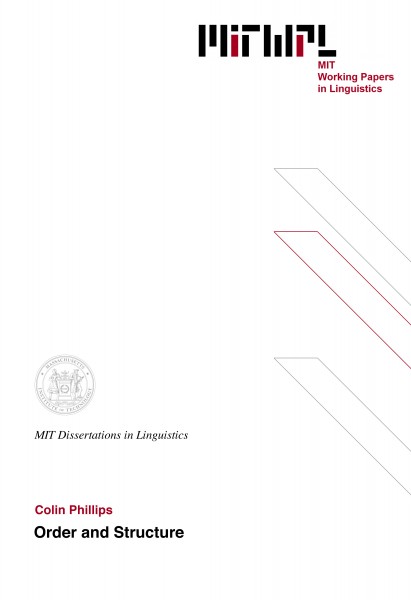Order and Structure
C. Phillips, 1996
ABSTRACT
The aim of this thesis is to argue for the following two main points. First, that grammars of natural language construct sentences in a strictly left-to-right fashion, i.e. starting at the beginning of the sentence and ending at the end. Second, that there is no distinction between the grammar and the parser. In the area of phrase structure, I show that the left-to-right derivations forced by the principle Merge Right can account for the apparent contradictions that different tests of constituency show, and that they also provide an explanation for why the different tests yield the results that they do. Phenomena discussed include coordination, movement, ellipsis, binding, right node raising and scope. I present a preliminary account of the interface of phonology and morphology with syntax based on left-to-right derivations. I show that this approach to morphosyntax allows for a uniform account of locality in head movement and clitic placement, explains certain directional asymmetries in phonology-syntax mismatches and head movement, and allows for a tighter connection between syntactic and phonological phrases than commonly assumed. In parsing I argue that a wide range of structural biases in ambiguity resolution can be accounted for by the single principle Branch Right, which favors building right-branching structures wherever possible. Evidence from novel and existing experimental work is presented which shows that Branch Right has broader empirical coverage than other proposed structural parsing principles. Moreover, Branch Right is not a parsing-specific principle: it is independently motivated as an economy principle of syntax in the chapters on syntax.
The combination of these results from syntax and parsing makes it possible to claim that the parser and the grammar are identical. The possibility that the parser and the grammar are identical or extremely similar was explored in the early 1960s, but is widely considered to have been discredited by the end of that decade. I show that arguments against this model which were once valid no longer apply given left-to-right syntax and the view of the parser proposed here.
Thesis Supervisor: Alec Marantz Title: Professor of Linguistics 3

